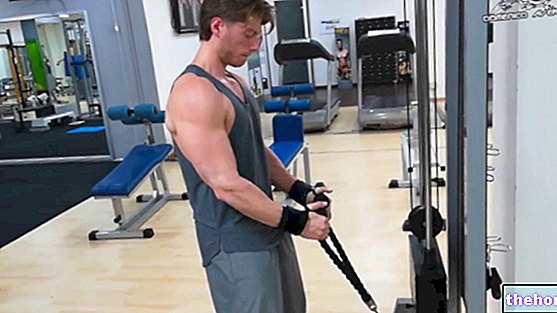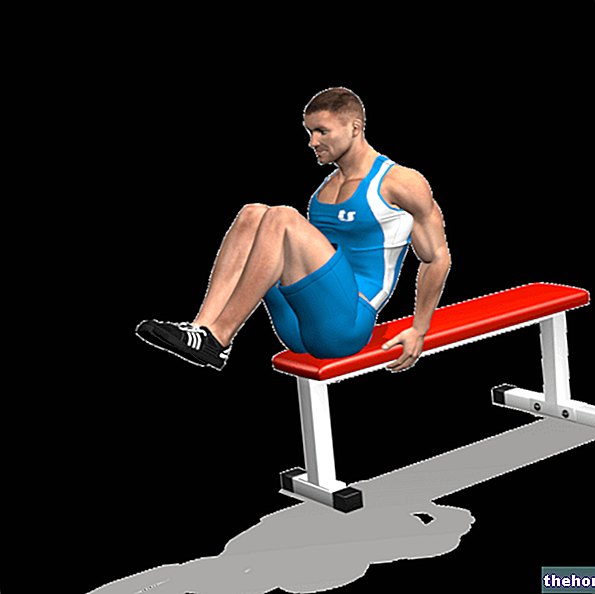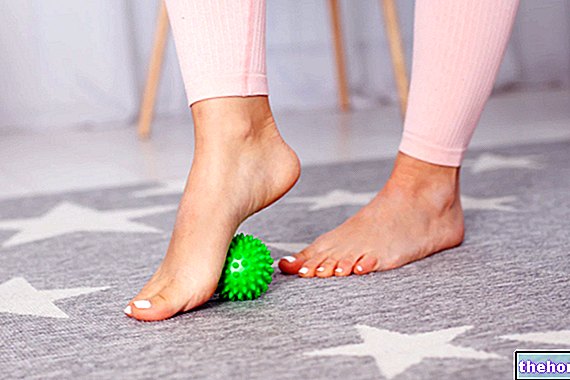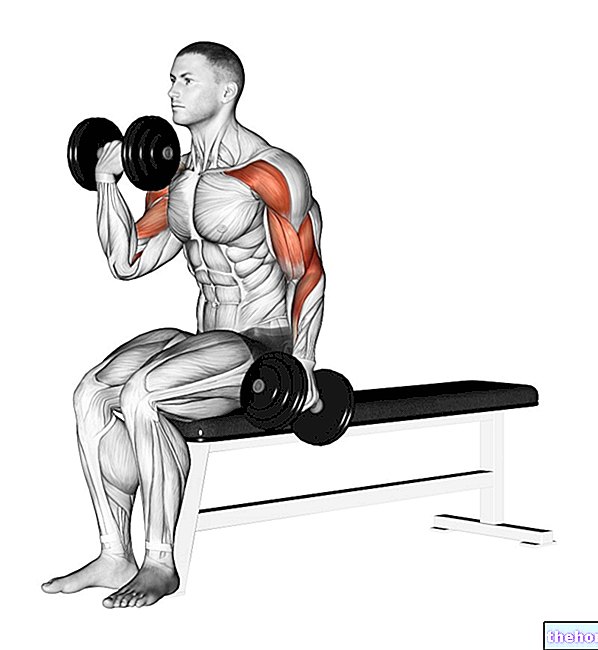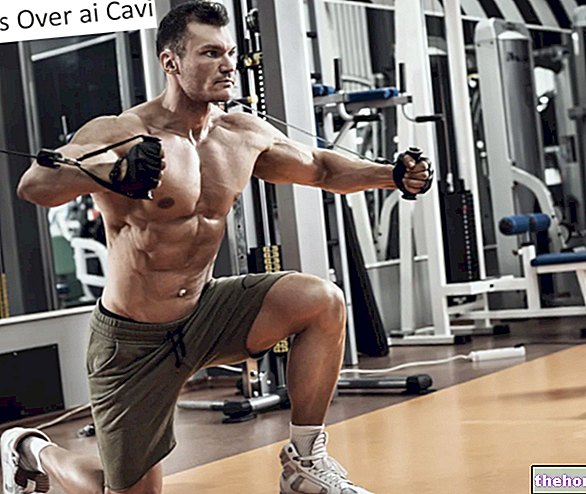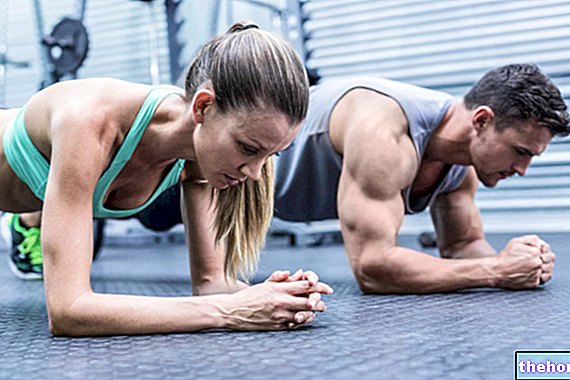Edited by Dr. Massimo Bonazzelli
Synonyms
The Back push press exercise is also known as the Back push press, Rear push press
Type of Exercise
Back push press is a basic exercise
Variants
- Push press in front
- Slow behind with standing barbell
- Slow behind with seated barbell
- Slow forward with standing barbell
- Slow forward with seated barbell
Push press behind: Execution
The starting position sees the athlete standing upright, with his back in his position of strength, but with the head tilted forward and the knees slightly flexed. The distance between the feet (stride) is equal to or slightly greater than the distance between the shoulders. The elbows are flexed, the wrists straight and the shoulders are adducted and extra-rotated so that the elbow, wrist and barbell are exactly on the vertical plane from a side view. The bar rests on the lower part of the upper beams of the trapezius as well as on the hands that grab it at a variable distance, but always greater than that between the shoulders. The execution consists in partially flexing the hips, knees and performing a "plantar extension at the level of the ankle, and then returning to the starting position , perform a further plantar flexion and take advantage of the thrust of the lower limbs to push the barbell upwards on the vertical plane on which it lay before starting, looking for I therefore want to draw a segment of a straight line and not a curve. Once the push of the legs has been used, they must immediately return to a stable position. During the push, the shoulders flex in the sagittal plane and abduct in the longitudinal plane, while the elbows extend and the shoulder blades begin to rotate upward when the elbows are at or slightly higher than the shoulders. The execution ends with full elbow extension. This is the basic over-the-neck exercise for power athletes and proper execution requires excellent shoulder mobility and balance.
Muscles involved in the exercise Push press behind
Group 0
- Lateral deltoid
- Anterior deltoid
- Upper bundles of the pectoralis major
- Supraspinatus
- Coracobrachialis
- Brachial biceps
Shoulder abduction
Group 1
- Brachial triceps
- Anconeus
Elbow extension
Group 2
- Inferior bundles of the large thoracic dentate
- Lower bundles of the trapezius
- Intermediate beams of the trapezius
Upper scapular rotation
Group 3
- Gluteus maximus
- Long head of the hamstring
- Semimembranous
- Semitendinosus
- Ischial head of the great adductor
Hip extension
Group 4
- Pettineo
- Short adductor
- Long adductor
- Great adductor
- Gracile
Hip adduction
Group 5
- Quadriceps femoris
Knee extension
Group 6
- Long peroneus
- Earthworms
- Interossei
- Abductor of the big toe
- Fifth finger abductor
- Peroneus brevis
- Square plantar
Group 7
- Short flexor of the fingers
- Long flexor of the big toe
- Short flexor of the big toe
Metatarsophalangeal flexion
Function of the stabilizing muscles: Stability of the shoulder, shoulder blade, elbow, grip, torso, hip, knee, ankle and foot

